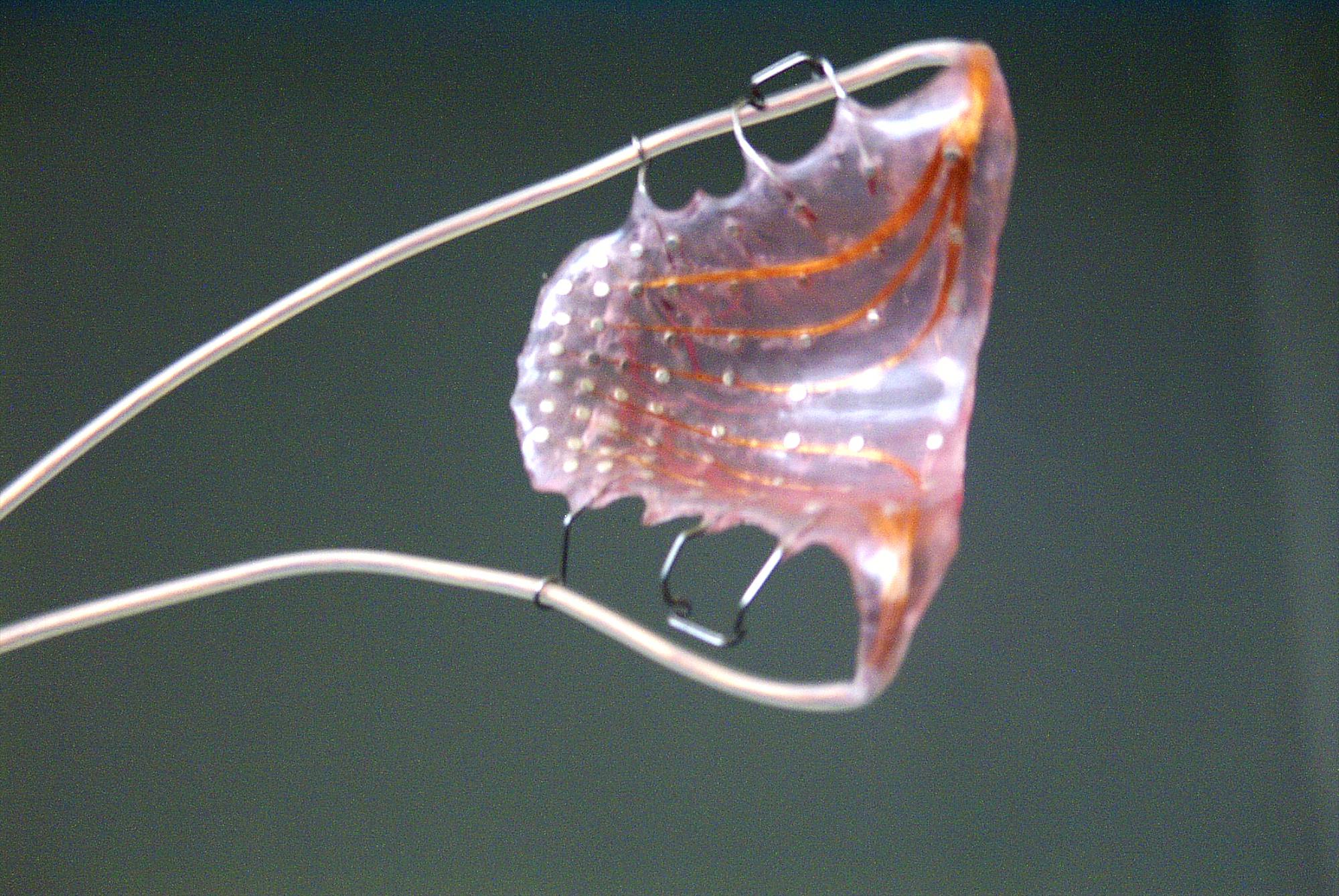

















EPG = Expanded Polyphonetic Generation
An audio-visual performance for two people.
The two performers sit motionless in a dialog situation on chairs, facing each other. On both sides, two spherical speakers hang from the ceiling at the level of their heads. Both performers have sensors (EPGs – electropalatographs) in their mouths, which convert the movements of the tongue along the palate into MIDI controller data. These MIDI signals control a MAX/MSP program that selects and plays different samples of a sound file. The sound file is an interview made exclusively for this project with the US voice performer Meredith Monk on the topic “Voice and Identity”.
The following questions were asked:
1. “Voice and Identity” – What are your spontaneous responses to this topic?
2. Do you have any particular work or a certain piece of music related to this topic?
3. Or: Do you have a particular work where this topic is expressed?
4. Do you have a particular tone of voice or vocal sound, which characterizes you?
5. In your opinion, what is the difference between non-verbal and verbal voice identity?
The interviewer’s questions have been edited out.
The MAX/MSP program accesses the voice of Meredith Monk, which is split up into the syllables and phonemes of the interview. Using the apparatus as a kind of musical instrument new terms and word sequences are formed from these voice fragments, creating improvised communication between the performers. The visual layer of the performance consists of two video projections based on the gesture theory of the Roman rhetorician Quintilian. Two gestures are shown: one symbolizing the beginning of a speech, the other symbolizing agreement. The movements of the hands are presented in extremely slow motion thus marking the cornerstones of the performance.